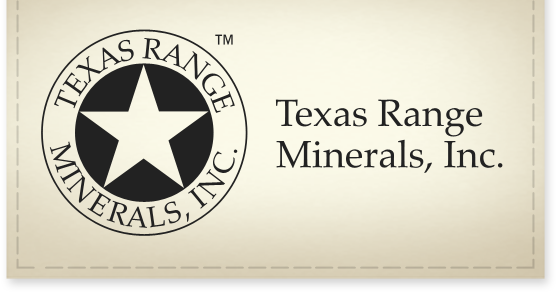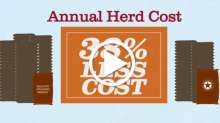FAQ’s
Common Question for TRM:
- Does TRM offer a 12:12 or 10:10 mix?
No, many geographic areas do not need any calcium in a supplement. Therefore many of our mixes do not contain any calcium. If calcium is needed we use calcium carbonate that is available in the rumen. Since TRM uses a water soluble source of phosphorus that is available in the rumen, considerably less is required to do the same as 10% or 12% from monocalcium phosphate or dicalcium phosphate. - Why does TRM use monosodium phosphate?
Our patented formulas use MSP for a few reasons. 1) It is water soluble therefore it is available immediately in the rumen. This is why a little MSP goes a long way. 2) MSP does not contain calcium. Since many geographic areas do not need any supplemental calcium then feeding a calcium phosphate such as monocalcium phosphate or dicalcium phosphate is wasteful and inefficient. 3) MSP contains very low incidental iron. Monocalcium phosphate and dicalcium phosphate contain extremely high levels of incidental iron that does not show up on the guaranteed analysis. These high levels of iron are antagonistic to phosphorus, copper and other trace minerals. - Does TRM have to be fed in a covered mineral feeder?
No, there is nothing in our mineral that will spoil such as meals, grains, plant protein by products or grain by-products. We recommend using open mineral feeders that don’t leak such as tire feeders or barrel bottoms. - Where should mineral feeders be placed?
Cattle Mineral feeders should be placed at or near loafing areas. A cow is basically a very lazy brute. It is hard to force them into remote or rough grazing areas with minerals. Most ranchers will put mineral feeders near water. Where water is furnished by surface tanks or ponds it is best to put mineral feeders “down wind” from the watershed. Animal impact around waterings will cause silt to fill tanks faster. - How many mineral feeders should I put out?
There are several things to consider. Pasture size. Horned or polled cattle. Herding instincts of breeds. As a general rule there needs to be one feeder for every 30 head. Cattle have a very distinct social order so not enough feeders at a location might mean that some of the animals lower down in the pecking order might not get a chance to consume mineral before the herd moves off. - What should the average daily consumption be?
1.5 oz to 2.0 oz per head per day over a year. Consumption will vary with range conditions. TRM sees the highest consumptions in spring calving cows in late summer or early fall before weaning. If range conditions are good,and the cows are milking the calves will be gaining weight and building frame and have a high requirement for mineral. - What does TRM use for consumption enhancers?
Nothing, if a mineral is properly balanced to the forage you do not have to trick or entice a cow to eat it. - Do TRM mixes contain Iodine?
Yes, TRM uses only Ethylenediamine dihydroiodide (EDDI) as a source of iodine. EDDI is a water-soluble organic compound (organic meaning containing carbon) C2H4(NH3)22 and is the best source of iodine because of its solubility. Iodine regulates basal metabolism and impacts all the animal’s physiological functions. - Does TRM recommend feeding salt blocks or loose salt beside the mineral?
Yes, TRM mixes contain high levels of sodium from sodium chloride (salt), sodium bicarbonate and sodium phosphate, but there are still times when cattle need extra sodium. Salt (Sodium Chloride) is a very inexpensive way of providing cattle extra sodium when they need it. - Which is best? Loose salt or Block Salt
There are pros and cons to everything. Cattle can consume loose salt faster than block salt if there is an equal number if loose salt feeders to salt blocks. One needs to put loose salt in a separate feeder or tub where as you can just throw salt blocks on the ground and you do not have to have a feeder. - How much does it cost?
Our mixes generally cost more per ton but we have some of the lowest annual cow costs in the industry. This is because a little of our mineral goes a long way and we don’t add a bunch of “fillers”. Annual consumption on a cow calf unit will generally average 35 to 40 pounds of mineral. - Will stockers gain more per day on TRM?
Stockers will gain an extra 2/10 of a pound per head per day on a TRM Stocker Mineral designed for putting as much weight on the calves. - Does TRM offer medicated mineral mixes?
Yes, we can add Chlortetracycline(CTC), Rumensin, Poloxalene, Bovatec, Altosid®, or just about any other medication at your request. - Why is there no calcium is some of your mixes?
The definition of a supplement is to supply something that is missing from the diet. If cattle were grazing alfalfa for instance, there would be no deficiency of protein so protein would not need to be fed. So with minerals, when a mineral is excessive in the diet and is available there is no need to supplement. Calcium is one of the most abundant elements on the earth. Most forages are excessive in calcium especially on western ranges, so TRM does not add what is not needed. - What about a trace mineral salt block?
The problem with a trace mineral block or iodine salt block is that they are all loaded up with iron oxide that makes them a nice rich red color. The problem with that is what if your forages are excessive in iron? - Why do cattle slow down on mineral consumption after a rain?
Usually following a rain during the growing season, forages will green up and be of better quality. The cattle do not need the mineral as much as when the forages are in their weakest stage. - Why is the consumption level of TRM formulations so low?
TRM uses ingredients that are 100% available to the microbes in the rumen. Rumen availability is much more important than Bio-Availibility which means the nutrient gets utilized at some point in the digestive system before it leaves the animal. We want the mineral supplements to be soluble in the rumen for maximum efficiency. - Do you offer a mineral block form?
No, all our ingredients are water soluble, thus prohibiting us from putting our mineral supplements in mineral block form.




